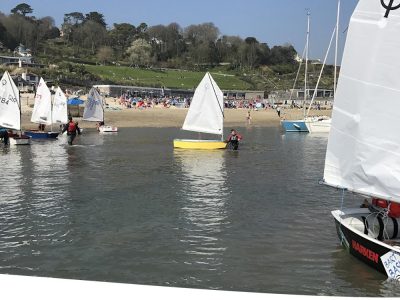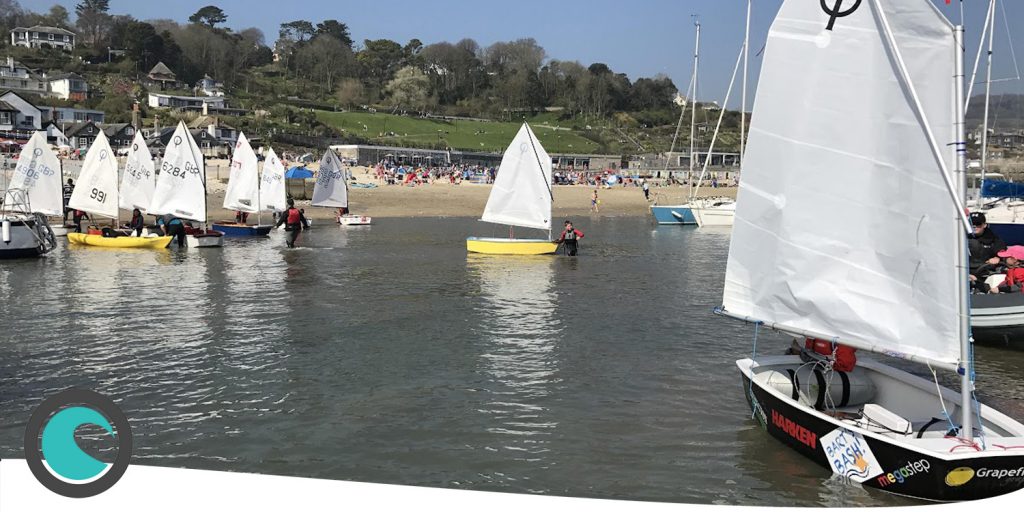Introducing a child to sailing can be a fantastic way to instil a love for the water and adventure. Here’s a guide I’ve written on how to get your child started with sailing.
A Guide to Introducing Your Child to Dinghy Sailing
Sailing is an exhilarating and educational activity that can provide lifelong skills and a deep appreciation for the sea. If you’re looking to introduce your child to sailing, here’s a step-by-step guide to ensure a safe and enjoyable experience.
Having been through this myself and also set up and run a beginners course for children, I get asked a lot of questions about this.
There are 2 routes to doing this, if you have your own boat you can do this yourself, for the purposes of this article I am assuming that you don’t have this option.
1. Choose a club or a sailing school:
Most UK sailing clubs will run beginners courses for children, but you can also do one at a Sailing School or Centre. They are normally run over a series of weekend and can take around 6-8 sessions to complete a beginners course. Courses will start in the spring normally once the weather warms up and there is less chance of storms.
Courses are run under the RYA and you can find information on the courses and locations here
Sailing Schools & Centres normally run intensive courses which are run over consecutive days whereas club run courses are more often run over a series of weekends.
For very young children, age 5-7 we have found it best to limit the time to one session a week, normally one afternoon. It gives them chance to take in what they have learnt and we have found that after an hour or two on the water they have normally had enough.
You don’t need to buy a boat for this, they will be provided.
2. Get the right kit:
Once you have decided to invest in a sailing course for your child, the most important thing to do next is to make sure they have the right kit. Not having the right kit will result in them getting cold, miserable and not wanting to do it. Getting cold immediately cuts the session short.
As a minimum, you should be buying a full wetsuit, i.e. one with full arms and legs. Some wetsuit boots (not wetsuit shoes as the ankles will be exposed) and also wetsuit gloves. There doesn’t need to be anything specialist about these, normal surf type boots and gloves are perfect. Lastly, one of the most overlooked items is a spray top. Wetsuits work well in the water and when they have water in, but when sailing you are out of the water and they don’t work so well. The wind will whistle through them so you need a windproof top. As a spray top is nowadays quite an expensive item you can always use a cagoul or any unlined wind / waterproof coat that your child has. You can always buy a proper spray top later if they decide they like sailing and want to carry on.
- Full Wetsuit
- Wetsuit Boots
- Wetsuit Gloves
- Spray top or waterproof cagoul.
Lastly and most importantly is a buoyancy aid. Some clubs or centres might provide them, but some don’t. Again these don’t need to be expensive, but most importantly they need to fit. Buying one a size too big wont work as the child will fall through it if they fall in to the water.
They need to fit well, and have a crotch strap. They should be buoyancy aids and not life jackets. E.g. the bright orange ones with the high collars are only really suitable for 5-7 year olds as when they get bigger the collar gets stuck on the boom when they tack. Gas filled life jackets aren’t suitable either for dinghy sailing.
A good choice for a buoyancy aid, which is very popular in the shop, is the palm universal pfd. The reason its so popular is because it has a lot of adjustment on it. The smallest size might fit a 5 year old and still fit him when he is 10. There aren’t any others that we know of with this amount of adjustment.
So number 5 on this list is a Buoyancy Aid or PFD (Personal Floatation Device)
Find our full range of childrens sailing kit here
3. Buy a boat:
The next step, once your child has completed the beginners course (Normally RYA Level 1 or IOCA Level 1) and they want to carry on, you should really start looking at buying your child a boat. Owning your own boat means that you will be using the same kit each week. You won’t turn up to find bits broken or missing. Your child will love owning their own boat. Its not normally expensive to buy a first boat.
The best way to approach this is to talk to the coach or sailing instructor who has taught your child. There are a number of different boats available for children and a lot of choosing one depends on what’s being sailed at your local club, but also the age and weight of your child. Popular single handed boats would be Optimists or RS Teras, popular double handed boats would be RS Fevas, Mirrors, ABs (if you are near Poole Harbour) and Cadets.
Buying a second hand boat is a small investment. Normally if you look after it you will find that you can sell it on in a couple of years time for almost the same money that you paid for it. If your child is a ‘hotshot’ sailor and wins a lot of races in it, you may find it might even gain money!
4. Join in with Club Racing:
Nearly all clubs will have some form of Junior or Youth racing. Getting your child in to racing will open a whole new window of opportunity. There is an endless list of things to learn to help them go faster and beat their friends. Normally the racing is coached, fun and no pressure. The focus is on fun. The children and given advice and suggestions on the water and in between races can ask the coach questions on why something went well or didn’t.
5. Is there Anything Else:
After club racing there is a complete RYA pathway that can be followed, from going to your first regional event, right up to going to the Olympics.
The first step should be going to some events at other clubs. If for example you are sailing Optimists, there is a whole calendar of events that you can do, some locally and some national. If possible ask someone at your club for help and guidance as it can be quite daunting going to a new venue for the first time. Ideally try and go with someone you know who is already going, so you will have someone there you can turn to. If you don’t have anyone, get in contact with the Regional Representative for your Class Association and they will be able to help. Lastly, never be afraid to ask. Everyone at the event will have been in your position at come point and will gladly help unload the boat, or tell you where to go.
I’ll leave this here for the moment as there is a lot more than can be added, but it goes beyond the scope of introducing a child to sailing.



